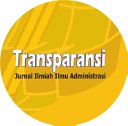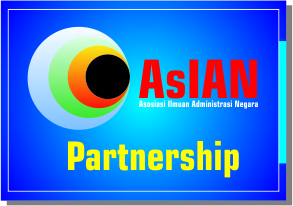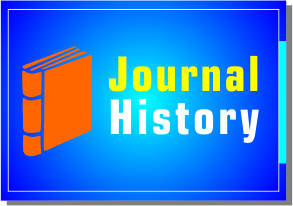Kolaborasi Antara Aparatur Birokrasi Pemerintah Daerah Istimewa Yogyakarta dan Forum Pengurangan Risiko Bencana (FPRB) DIY Dalam Penyelenggaraan Penanggulangan Bencana di Daerah Istimewa Yogyakarta
DOI:
https://doi.org/10.31334/trans.v9i1.87Keywords:
Disaster, Disaster Management, Multi Stakeholder, Collaborative GovernanceAbstract
Yogyakarta Special Region (DIY) can be regarded as a mini-disaster laboratory, this is because the potential for disaster in DIY is very big. DIY has 12 disaster threats: Flood, Epidemic & Outbreak, Extreme & Abrasion, Extreme & Abrasion, Earthquake, Tsunami, Failure Technology, Drought, Volcano Eruption, High winds, Landslide, Fire and Social Disasters.With the existence of several types of threats Disaster is certainly a challenge for the Government of Yogyakarta Special Region. The government is expected to be better prepared to reduce the risk of casualties in the event of a disaster. Implementation of disaster management can not be done by one party only, in accordance with the mandate of Act No. 24 of 2007 stating that the implementation of disaster management government should not do alone and must involve multi stakeholders.This research uses descriptive qualitative research method, with data collecting technique through direct observation, in-depth interview with Pemeriintah Daerah Istimewa Yogyakarta, BPBD, and some members of PRB Yogyakarta Forum. and review of written documentation.Local Government of Yogyakarta realized that multi-stakeholder involvement is needed in disaster management. on the basis of the initiation of various stakeholders involved in the implementation of disaster management during the earthquake bantul then formed a forum as a forum for gathering of stakeholders from various elements of the Forum Disaster Risk Reduction or more often called DIY DRR Forum. With this froum the actors perform their respective functions by coordinating and working together.This study, which refers to the collaboration between the DIY Government and DIY DRR Forum, has resulted that the implementation of Disaster Management in Yogyakarta has now been done by various multi-actors collaboratively. Each actor has been divided into roles according to their respective expertise. In Collaborative Governance can be seen through two dimensions of the Context System and the driving dimension. Through these two dimensions in this study see how the collaboration between DIY Government and Froum DRR DIY.References
Ansell dan Gash. 2007. Collaborative Governance in Theory and Practice, Journal of Public Administration Reesearch and Theory. Published by Oxford University Press
Balogh, S, dkk. 2011. An Integrative Framework for Collaborative Governance, Journal of Public Administration Research and Theory.
Blaikie,P.2002.â€Vulnerability and Disaster†dalam The Companion to Development Studies. V.Desai dan R.Potter (Eds). London:Arnold3
Charoengnngam, C., & Leungbootnak, N. (2005). Post-Tsunami Disaster Reconstruction Management : A Case Study of Thailand. Asian Institute og Technology.
Choi, T., & Robertson, P. J., Caucuses in collaborative governance: Modeling the for an emerging era; Public Administration Review, 70(s1), s89-s99; 2010
Coppola,D.P. (2007). Introduction to International Disaster Management. Burlington,MA:Elseiver.
Direktorat Riset dan Pengabdian Masyarakat. (2007). Kajian Kebijakan Penanggulangan Banjir di Indonesia,2007. Kajian Kebijakan Penanggulanga:Partisipasi Masyarakat. Jakarta.Universitas Indonesia
De Leeuw, A.C.J., 2000, Bedrijfskunding Management, Van Gorcum, Assen, Dutch
D.Ngar-yin dan P. Hills. 2010. Collaborative Governance for Sustainable Development: Wind Resource Assessment in Xinjiang and Guangdong Province, China. Copyright ©2010 John Wiley & Sons, Ltd and ERP Environment. Wiley online Library.
Dwiyanto, Agus. 2011. Manajemen Pelayanan Publik: Peduli, Inklusif, dan Kolaboratif. Yogyakarta: Gadjah Mada University.
Dynes,RR., Quarentelli, E.L., & Kreps, G.A.(1972. A Perspective On Disaster. Newark:Disaster Research Center, University of Delaware.
Emergency Management Australia.1998. Australian Emergency Manual Series. Part I. Manual 3.ACT.Australia: EMA
Fadhilah,Ifan Rasyid.2013.Skripsi: Manajemen Jaringan Organisasional: Studi Kasus FPRB (Forum Pengurangan Resiko Bencana) Dalam Bencana Merapi 2010. Jurusan Politik dan Pemerintahan .UGM: Yogyakarta.
Fosler,R.S. (2002). Working Better Together : How Government, Business, and Profit Organizations Can Achieve Public Purposes through Cross Sector Collaborations, Aliances, and Partnership. Washington, D.C/ /; Independetn Sector
Gillespie, D.F., & Streeter, C.L. (1987). Conceptualizing and Measuring Disaster Preparedness. International Journal of Mass Emergencies and Disaters, 5 (2), pp.155-176 Godschalk,D.R.,(1991). Disaster Mitigation and Hazard Management. In T.Drabek&G.Hoetmer (Eds), Emergency Management: Priciples and Practice for Local Government. Washington, DC: International City Management Association.
Hardaker,J.B., Huirne R.B.M.and Anderson,J.R., 1997, Coping with risk in agriculture. CAB International, Wallingford, United Kingdom
Kaufan and Dake.2009. Understanding and Advancing Cross Sector Collaboration in Homeland Security and Emergency Management.
King,D. (2007). Organization in Disaster. Natural Hazards, 40, pp.657-665 Kirchenbaum,Alan.2004. Chaos Organization and Disaster Management.Marcel Dekker.New York
Kumorotomo, Wahyudi. dkk, 2013. Transformasi Pelayanan Jakarta Commuter Line: Studi Tentang Collaborative Governance di Sektor Publik. Jurusan Manajemen dan Kebijakan PUblik, FISIPOL, UGM
Kusumasari, Bevaola.2014.Manajemen Bencana dan Kapabilitas Pemerintah Lokal.Gava media: Yogyakarta.
Labadie,J.R.(1984).Problems in Local Emergency Management. Environmental Management. Pp 489-494
LIPI dan UNESCO,2006. Kajian kesiapsiagaan masyarakat dalan mengantisipasi bencana gempa bumi dan tsunami,LIPI, Jakarta
Masmuh.Abdullah, 2008. Komunikasi Organisasi Dalam Perspektif Teori dan Praktek, UPT Penerbitan UMM: Malang
McEntire,D.A.,&Myers,A.(2004). Preparing Communities for Disasters: Issues and Processes for Government Readiness. Disaster Prevention and Management,13(2). Pp.140-152
Michael, Bruce, Setiawan B dan Rahmi,D.H. 2000.Pengelolaan Sumber Daya Alam dan Lingkungan, Gadjah Mada University Press, Yogyakarta.
Mileti, D. S (1999). Disater by Design. Washington DC: Josepth Henry Press.
Moe,T.L., & Pathranarakul,P.(2006). An Integrated Approach to Natural Disaster Management: Public Project Management and Its Critical Succes Factors. Disaster Prevention and Management, 15 (3), 396-413
Moe, T.L Gehbauer, F., Senitz,s., & Mueller, M. (2007). Balanced Scorecard for Natural Disaster Management Project. Disaster Prevention and Management, 16 (5), 785-806
Moleong.Lexi J. 2005 .Metodologi Penelitian Kulitatif. PT.Remaja Rosdakarya:Bandung
Locke, L., Spirduso, W. W., & Silverman, S. (2000). Research proposals that work. 4th Edition. New York: Sage Publishing Co.
Pratikno. 2008. Manajemen Jaringan Dalam Perspektif Strukturasi . Jurnal Kebijakan dan Administrasi Publik Volume 12, Nomor 1 ( Mei 2008 ). Yogyakarta : MAP UGM.
Perry, R.W., & LIndell,M.K. (2003). Preparedness for Emergency Response: Guidelines for the Emergency Planning Process. Disasters, 27(4), pp.336-350
Perry, M. (2007) Natural Disaster Management Planning: A Studi of Logistics Managers Responding to the Tsunami. International Journal og Physical Distribution and logistics Management, Nol.37 No.5, pp. 409-433
Robbins,P.Stephen. and timothy A.Judge, 2009, Organizational Behavior, 13 Í Íª Edition, Pearson Education, Inc., Upper Saddle River, New Jersey, PP.209-586
Shaluf,I.M.(2008). Technologival Disaster Stages and Management. Disaster Prevention and Management.17 (1),pp.114-126
Sink, D.W. (1998). “Interorganizational Collaborationâ€, dalam Shafaritz,J.M. (Ed.), The Encyclopedia of Public Policy and Administration. Boulder, CO: Westview
Stake, R. (1995). The art of case study research. Thousand Oaks, CA: Sage pp. 49-68). Sutara, Agus Ardianto, 2001. Atasi Konflik Etnis, Global Pustaka, Yogyakarta
Tingsanchali, T. (2005). Tsunami Attacks and Disaster Management. Paper presented at the Presentation of Findings by AIT Team of Expert on Tsunami Affected Areas in the South of Thailand.
Turner, J.R., & Muller (2004). Communication and Co-Operation on Projects Between the Poject.Between Owner as Principal and the Project Manager as Agent. European Management Journal of Institutional and Theorical Economics, Vol 22 No.3, pp. 327-336
Wolensky, R.P & Wolensky, K.C. (1990). Local Government’s Problem with Disaster Management: A literature Review and Structural Analysis. Policy Studies Review ,9(4), 703 725 Wyner, A.J., & Mann, D.E. (1983). Seismic Safety Policy In California: Local Governments and Earthquakes. Santa Barbara: Departurtement of political Science, University of California.
Quarentelli, E. L. (1997). Ten Criteria for Evaluating the Management of Community Disasters. Disaters, 21(1) pp.39-56
Undang-Undang, Peraturan Pemerintah, Peraturan Daerah dan Dokumen :
UU 24 tahun 2007 tentang penanggulangan bencana
Peraturan Presiden No.8 Tahun 2008 menyebutkan bahwa Unsur Pelaksana Penanggulangan Bencana
Peraturan Kepala BNPB 03 tahun 2012tentang Panduan Penilaian Kapasitas Daerah Dalam Penanggulangan Bencana
Downloads
Published
Issue
Section
License

This work is licensed under a Creative Commons Attribution-ShareAlike 4.0 International License
Please find the rights and licenses in Transparansi : Jurnal Ilmiah Ilmu Administrasi By submitting the article/manuscript of the article, the author(s) agree with this policy. No specific document sign-off is required.
- License
The commercial use of the article will be governed by the Creative Commons Attribution license as currently displayed on Creative Commons Attribution-ShareAlike 4.0 International License.
2. Author(s)' Warranties
The author warrants that the article is original, written by stated author(s), has not been published before, contains no unlawful statements, does not infringe the rights of others, is subject to copyright that is vested exclusively in the author and free of any third party rights, and that any necessary written permissions to quote from other sources have been obtained by the author(s).
3. User Rights
Transparansi : Jurnal Ilmiah Ilmu Administrasi spirit is to disseminate articles published are as free as possible. Under the Creative Commons license, Transparansi : Jurnal Ilmiah Ilmu Administrasi permits users to copy, distribute, display, and perform the work for non-commercial purposes only. Users will also need to attribute authors and Transparansi : Jurnal Ilmiah Ilmu Administrasi on distributing works in the journal and other media of publications.
4. Co-Authorship
If the article was jointly prepared by more than one author, any authors submitting the manuscript warrants that he/she has been authorized by all co-authors to be agreed on this copyright and license notice (agreement) on their behalf, and agrees to inform his/her co-authors of the terms of this policy. Transparansi : Jurnal Ilmiah Ilmu Administrasi will not be held liable for anything that may arise due to the author(s) internal dispute. Transparansi : Jurnal Ilmiah Ilmu Administrasi will only communicate with the corresponding author.
5. Miscellaneous
Transparansi : Jurnal Ilmiah Ilmu Administrasi will publish the article (or have it published) in the journal if the article’s editorial process is successfully completed. Transparansi : Jurnal Ilmiah Ilmu Administrasi editors may modify the article to a style of punctuation, spelling, capitalization, referencing and usage that deems appropriate. The author acknowledges that the article may be published so that it will be publicly accessible and such access will be free of charge for the readers as mentioned in point 3.
Every accepted manuscript should be accompanied by "Copyright Transfer Agreement"prior to the article publication.











